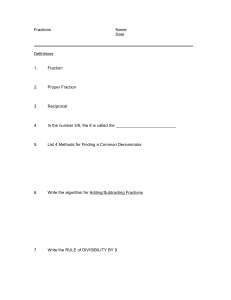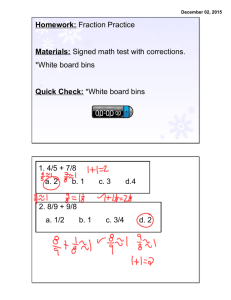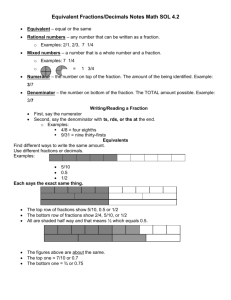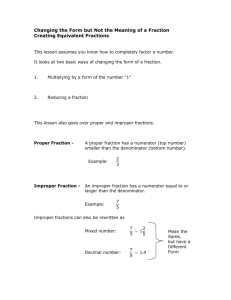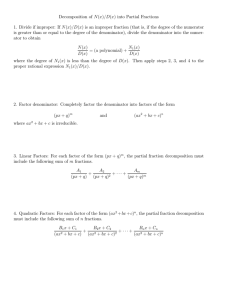1. A Fraction Can Be Used to Indicate Equal Parts of a Whole. In our
advertisement
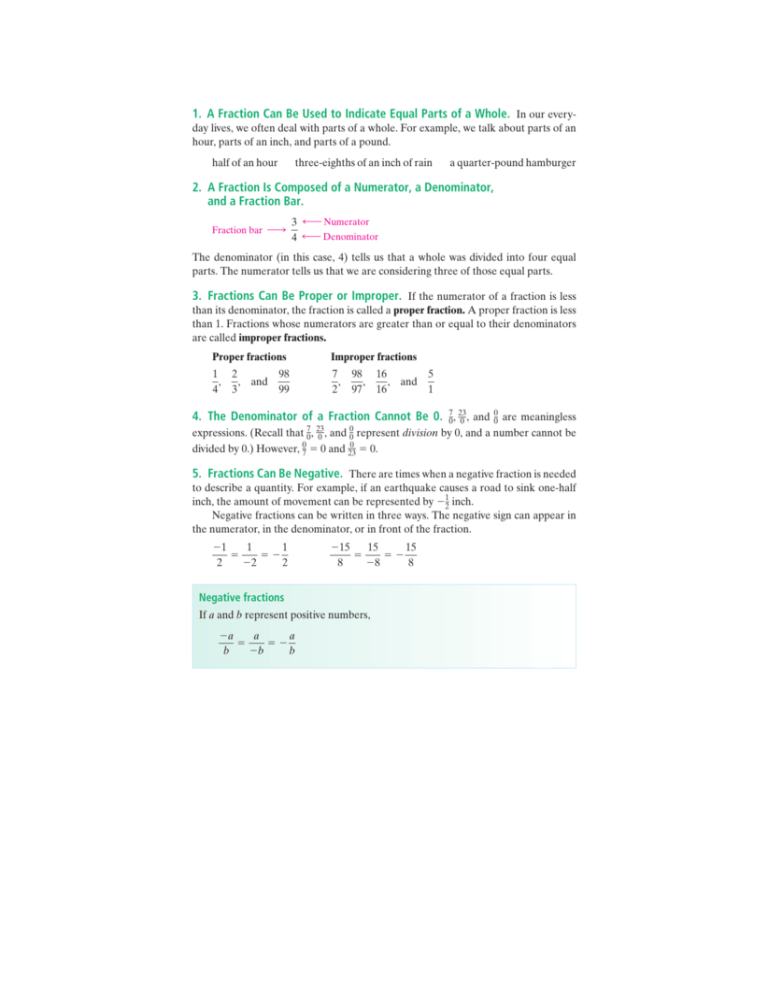
1. A Fraction Can Be Used to Indicate Equal Parts of a Whole. In our everyday lives, we often deal with parts of a whole. For example, we talk about parts of an hour, parts of an inch, and parts of a pound. half of an hour three-eighths of an inch of rain a quarter-pound hamburger 2. A Fraction Is Composed of a Numerator, a Denominator, and a Fraction Bar. Fraction bar ¡ 3 — Numerator 4 — Denominator The denominator (in this case, 4) tells us that a whole was divided into four equal parts. The numerator tells us that we are considering three of those equal parts. 3. Fractions Can Be Proper or Improper. If the numerator of a fraction is less than its denominator, the fraction is called a proper fraction. A proper fraction is less than 1. Fractions whose numerators are greater than or equal to their denominators are called improper fractions. Proper fractions Improper fractions 1 , 4 7 , 2 2 , and 3 98 99 98 , 97 16 , and 16 5 1 4. The Denominator of a Fraction Cannot Be 0. 70, 230, and 7 23 0, 0 , expressions. (Recall that divided by 0.) However, 07 0 and 00 represent 0 and 23 0. 0 0 are meaningless division by 0, and a number cannot be 5. Fractions Can Be Negative. There are times when a negative fraction is needed to describe a quantity. For example, if an earthquake causes a road to sink one-half inch, the amount of movement can be represented by 12 inch. Negative fractions can be written in three ways. The negative sign can appear in the numerator, in the denominator, or in front of the fraction. 1 1 1 2 2 2 15 15 15 8 8 8 Negative fractions If a and b represent positive numbers, a a a b b b
